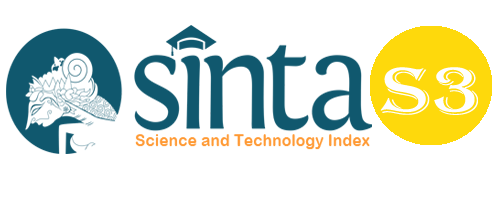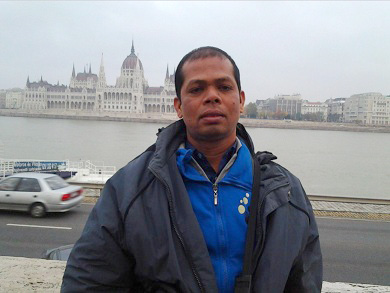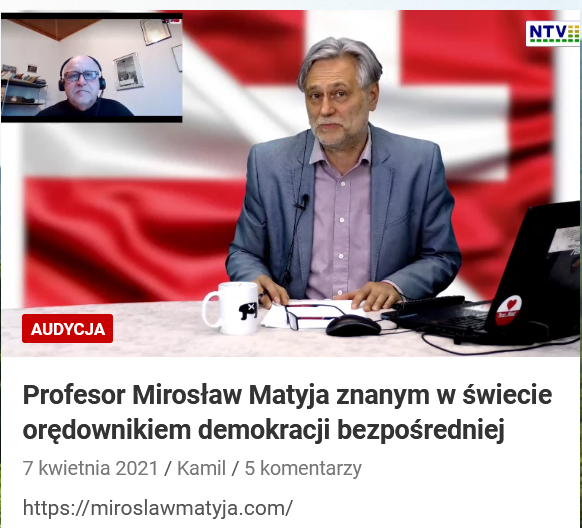Rising the Competitiveness of a Cultural Tourist Destination in Banten, Indonesia through Stakeholder Orientation, Strategic Capability, and Shared Value Creation
Abstract
The objective of this research is to determine the impact of stakeholder orientation, strategic capability, and shared value creation on the competitiveness of cultural tourist destinations. This study was carried out in order to improve the competitiveness of Banten, which has many cultural advantages but has not been fully utilized. This study employs quantitative methods, such as the analysis of structural equation models (SEM), which are supplemented by qualitative data. This research was performed out by distributing electronic questionnaires to 321 respondents from 8 districts and cities, including tourism officials, tour guide associations, tourism pioneer groups, tourism stakeholder’s social media groups, youth groups, and creative entrepreneur’s associations. In addition, focus group discussions with stakeholders were held to balance and strengthen the data collected. According to the results of the concurrent tests, Orientation Stakeholder (OS), Strategic Capabilities (KS), and Shared Value Creation (PNB) all contribute significantly to the competitiveness of cultural tourist destination variables. Remarkably, partial tests revealed that the variety of OS and KS has no effect on the competitiveness variables of cultural tourist destinations (DS). This implies that the indicators of OS, KS, and PNB should be improved in the future, particularly the variable of shared value creation (PNB), which plays an essential role.
Keywords
Full Text:
PDFReferences
Ahmad, C. R., Khattak, J., Khan, M. N., & Khan, N. A. (2011). Pros & cons of macro environment (PEST Factors) on new product development in fast food industry of Pakistan for sustainable competitive advantage interdisciplinary. Journal of Contemporary Research in Business, 3(2), 932–945.
Arcana, K. T. P., & Wiweka, K. (2015). The Impact of Managing Sustainable Event and the Contribution to the Formation of Destination Image at Nusa Dua Resort, Bali. Jurnal Ilmiah Hospitality Management, 6(1), 43–48.
Arcana, K. T. P., & Wiweka, K. (2016). A study of indigenous tourism product development case study: The Baduy, South Banten, West Java. Jurnal Ilmiah Hospitality Management, 7(1), 65–74.
Arief, B. S. * M., Hamsal, M., Furinto, A., & Wiweka, K. (2020). Local’s Perspective of Community Participation in Lake Toba as a Tourism Destination. Solid State Technology, 63(4), 1124–1132.
Asmuni, et al. (2020). Implementation of the principle of sale and purchase transactions through MLM in Brand Branch (BC) PT. Herba Penawar Alwahida Indonesia (HPAI) Tanjungbalai. Budapest International Research and Critics Institute-Journal (BIRCI-Journal) Volume 3, No. 4, Page: 3376-3385
Bollen, K. A., & Long, J. S. (1993). Testing structural equation models (Vol. 154). Sage.
BPS. (2020). Jumlah Devisa Sektor Pariwisata, 2015-2018. https://www.bps.go.id/dynamictable/2018/05/22%2000:00:00/1357/jumlah-devisa-sektor-pariwisata-2015-2018.html
BPS Banten. (2021). BPS Provinsi Banten. https://banten.bps.go.id/subject/16/pariwisata.html
Buhalis, D., & Spada, A. (2000). Destination management systems: Criteria for success–an exploratory research. Information Technology & Tourism, 3(1), 41–58.
Calderwood, L. U., & Soshkin, M. (2019). The travel and tourism competitiveness report 2019.
Corte, V., & Aria, M. (2016). Coopetition and sustainable competitive advantage. The case of tourist destinations. Tourism Management, 54, 524–540. https://doi.org/10.1016/j.tourman.2015.12.009
Crilly, D. (2011). Predicting stakeholder orientation in the multinational enterprise: A mid-range theory. Journal of International Business Studies, 42(5), 694–717.
Dalgic, T., & Leeuw, M. (1994). Niche marketing revisited: Concept, applications and some European cases. European Journal of Marketing.
Darsono, N., Yahya, A., & Amalia, R. (2016). Analysis of distinctive capabilities and competitive advantage on business performance of tourism industry in Aceh. Journal of Economics, Business and Management, 4(3), 231–234.
Demolingo, R. H., Dewi, L., Karyatun, S., Wiweka, K., Adnyana, P. P., & Prasetya, A. (2021). Millennials’ Travel Behavior in Small Island Destination: The Overview of Gili Trawangan, Indonesia. Asian Journal of Advanced Research and Reports, 28–37. https://doi.org/10.9734/ajarr/2021/v15i1230442
Ernawati, H., Soeroso, A., Annisa, R. N., & Wibowo, F. X. S. (2018). Measuring Destination Image on Tourism River Area the Case of Gua Pindul. Journal of Education, Society and Behavioural Science, 28(2), 1–24. https://doi.org/10.9734/JESBS/2018/45216
Grimstad, S., & Burgess, J. (2014). Environmental sustainability and competitive advantage in a wine tourism micro-cluster. Management Research Review.
Indrajaya, T., Cahyandito, M. F., Wiweka, K., & Adnyana, P. P. (2019). The development of creative industry strategies as a tourist attraction in Banten Province, Indonesia. Journal of Economics, Management and Trade, 1–10.
Indrajaya, T., Kartini, D., Kaltum, U., Mulyana, A., & Wiweka, K. (2021). An Exploratory Study of the Influence Between Stakeholders Orientation, Strategic Capabilities, and Shared Value Creation towards Competitiveness through Digital Business Strategies in Banten Cultural Tourism Destination. Systematic Reviews in Pharmacy, 12(3), 647–662. https://doi.org/10.31838/srp.2021.3.91
Jaakkola, E., & Alexander, M. (2014). The role of customer engagement behavior in value co-creation: A service system perspective. Journal of Service Research, 17(3), 247–261.
Kelloway, E. K. (1998). Using LISREL for structural equation modeling: A researcher’s guide. Sage.
Kerlinger, F. N. (2000). Asas-Asas Penelitian Behavioral Edisi 3. Yokyakarta. Penerbit Gajah Mada University Press.
King, A. A., & Tucci, C. L. (2002). Incumbent entry into new market niches: The role of experience and managerial choice in the creation of dynamic capabilities. Management Science, 48(2), 171–186.
Krueger, R. A. (2014). Focus groups: A practical guide for applied research. Sage publications.
Marlizar, et al. (2020). The Role of Market Orientation and Creativity in Affecting the Marketing Performance of Market Traders in Aceh Market Banda Aceh City. Budapest International Research and Critics Institute-Journal (BIRCI-Journal).P. 1114-1127
Pearson, J., O’Connell, J. F., Pitfield, D., & Ryley, T. (2015). The strategic capability of Asian network airlines to compete with low-cost carriers. Journal of Air Transport Management, 47, 1–10.
Perles Ribes, J., Ramón-Rodriguez, A., Rubia-Serrano, A., & Moreno-Izquierdo, L. (2013). Economic crisis and tourism competitiveness in Spain: Permanent effects or transitory shocks? Current Issues in Tourism. https://doi.org/10.1080/13683500.2013.849666
Pitana, I., & Diarta, I. (2009). Pengantar ilmu pariwisata.
Porter, M. E. (2011). Competitive advantage of nations: Creating and sustaining superior performance. simon and schuster.
RENSTRA 2015-2019. (2015). RENCANA STRATEGIS PENGEMBANGAN DESTINASI DAN INDUSTRI PARIWISATA TAHUN 2015—2019. Kemenpar.Go.Id. https://www.kemenpar.go.id/post/rencana-strategis-pengembangan-destinasi-dan-industri-pariwisata-tahun-2015-2019
Ritchie, J. R., & Crouch, G. I. (2010). A model of destination competitiveness/sustainability: Brazilian perspectives. Revista de Administração Pública, 44(5), 1049–1066.
Romdonny, J., Rosmadi, M. L. N. (2019). Factors Affecting Customer Loyalty in Products. Budapest International Research and Critics Institute-Journal (BIRCI-Journal) Volume 2, No 1, Page: 337-343
Sekaran, U., & Bougie, R. (2016). Research methods for business: A skill building approach. John Wiley & Sons.
Spanos, Y. E., & Prastacos, G. (2004). Understanding organizational capabilities: Towards a conceptual framework. Journal of Knowledge Management.
Sugiyono, P. (2016). Metode Penelitian Manajemen (Pendekatan Kuantitatif, Kualitatif, Kombinasi (Mixed Methods), Penelitian Tindakan (Action Research, dan Penelitian Evaluasi). Bandung: Alfabeta Cv.
Tan, Q., & Sousa, C. M. (2013). International marketing standardization. Management International Review, 53(5), 711–739.
UNWTO. (2017). Tourism an economic and social phenomenon. UNWTO. www2.unwto.org/content/why-tourism.
Wiweka, K. (2014). Analisis konsep tri hita karana pada daya tarik warisan budaya: Studi kasus puri agung karangasem, bali. Jurnal Master Pariwisata (JUMPA).
Wiweka, K., & Arcana, K. T. P. (2019). Rethinking the Theory of Tourism: What is Tourism System in Theoretical and Empirical Perspective? Journal of Business on Hospitality and Tourism, 5(2), 318–336.
Wiweka, K., & Utami, F. N. (2017). Komersialisasi unsur budaya kedaton sultan dan masjid sultan di ternate, Maluku Utara. Jurnal Sains Terapan Pariwisata, 2(1), 29–43.
Wright, P., Ferris, S. P., Hiller, J. S., & Kroll, M. (1995). Competitiveness through management of diversity: Effects on stock price valuation. Academy of Management Journal, 38(1), 272–287.
DOI: https://doi.org/10.33258/birci.v5i2.5193
Article Metrics
Abstract view : 46 timesPDF - 15 times
Refbacks
- There are currently no refbacks.

This work is licensed under a Creative Commons Attribution-ShareAlike 4.0 International License.

This work is licensed under a Creative Commons Attribution-ShareAlike 4.0 International License.

_.gif)

















_.gif)



